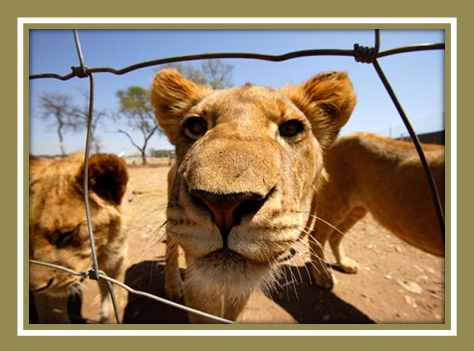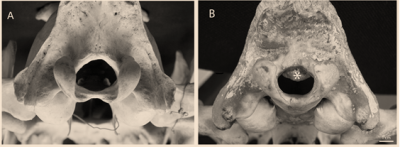News
Latest Lion Aid News
Why lions should not be kept in captivity
Tuesday 15th April 2014
|
We suffer more than you think
Here, I’ll review some new information as well as data published some time ago about the negative consequences of keeping lions in captivity. It seems lions are particularly susceptible to skeletal deformities, behavioural abnormalities, and high rates of cub mortality. This information is particularly relevant because there are now an estimated 8,000 lions bred in captivity in South Africa primarily to supply the canned hunting industry and because it is emerging that zoos regularly euthanize lions in their collections – a recent event in the UK involved the removal of six lions due to what was described as “behavioural abnormalities”. The older information is supplied by a paper published in the journal Nature in 2003 entitled “Captivity effects on wide-ranging carnivores”. There, the authors found a strong correlation between high levels of infant mortality in captivity and minimum home-range size of the species in the wild. In other words, species like lions and polar bears with large home ranges had the highest rates of infant mortality (42% and 65% respectively) compared to species like the American mink with a much smaller home range (3%). In addition, the authors found a very strong correlation between “stereotypic behaviour” (pacing up and down in cages in particular) and home range size. Again, lions and polar bears had the highest levels of stereotypic behaviour (48% and 40% respectively), while species like the American mink with much smaller home ranges in the wild showed much lower levels of such behaviour (9%). The authors concluded that among carnivores, those species that are naturally wide-ranging showed the most evidence of stress and/or psychological dysfunction in captivity. Infant mortality was largely a result of poor maternal care. The authors therefore suggested that the keeping of naturally wide-ranging species in captivity should be greatly improved (e.g. by providing a lot more space – polar bears in captivity have about one-millionth the space available to a wild polar bear) or phased out completely. The newer information was recently published in PLoS One, entitled “Comparative Skull Analysis Suggests Species-Specific Captivity-Related Malformation in Lions (Panthera leo)”. The authors commented that while lions have been kept in captivity for centuries and reproduce well, high rates of stillbirths as well as morbidity and mortality of neonate and young lions are reported. Many of these cases were associated with bone malformations, including foramen magnum (FM) stenosis (narrowing – the FM is where the spinal cord exits the brain). The authors found such stenosis in 40% of captive lion skulls versus 4% of wild lion skulls in various museum collections. Such narrowing causes pressure on the spinal cord and is associated with neurological abnormalities – the authors say “We hypothesize here that these differences arise from additional bone formation … it may be proposed that additional bone growth is not only outward but also inward, possibly causing diminution of the caudal fossa, compression of the hindbrain and the neurological symptoms often seen in diseased lions.” The authors postulated that such stenosis could result from lack of adequate diet (especially insufficient Vitamin A) but to me that is not entirely plausible as the only explanation as no such pattern was found among captive versus wild tigers. The authors also reviewed previous analyses indicating other captivity-related malformations among lions including shortening of the skull, reduced cranial volume and a general increase in the overall thickness of the skull. Again, a dietary cause was proposed: wild lions eat whole carcasses including the internal organs that contain high levels of necessary vitamins. In contrast, captive carnivores are usually fed pieces of red meat, chickens or processed cat food. Apart from a dietary explanation the authors also propose genetic causes – perhaps due to increased levels of inbreeding among captive lions. This is plausible as few wild lions enter the captive-bred pool, which is largely supplied by lion lineages long held in captivity. In summary, lions in captivity suffer a high level of stillbirths, a much higher frequency of behavioural abnormalities compared to smaller carnivores, and skeletal deformities likely to cause neurological complications. As captive bred lions do not contribute to the conservation of ever-shrinking wild lion populations and cannot be returned to the wild without a staged programme including at least one generation, one does wonder what the value is of keeping lions in captivity. Clearly there are strong negative health and animal welfare consequences that should mitigate strongly against this practice.
Picture credits – captive lions: www.theguardian.com; skulls: PLos One. If you have not already signed up to our mailing list, you can add your name here and keep up to date with our ongoing work and, most importantly, DONATE to support our work to conserve the remaining fragile lion populations. Thank you
Categories: Events/Fundraising, Trophy Hunting, Domesticating Animals |
Posted by Chris Macsween at 17:02
No comments have been posted yet.
Add a new comment
Existing user
New user sign up





